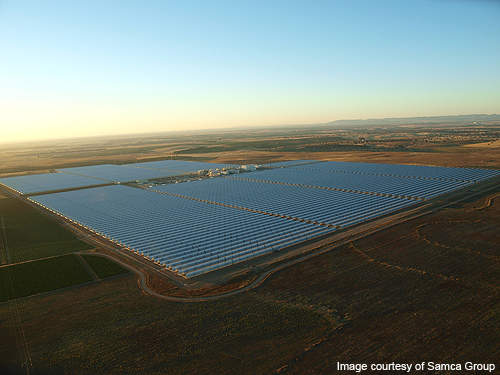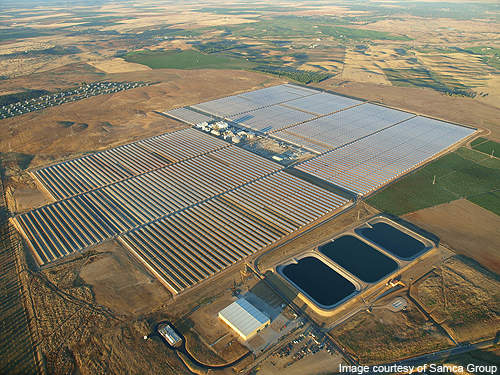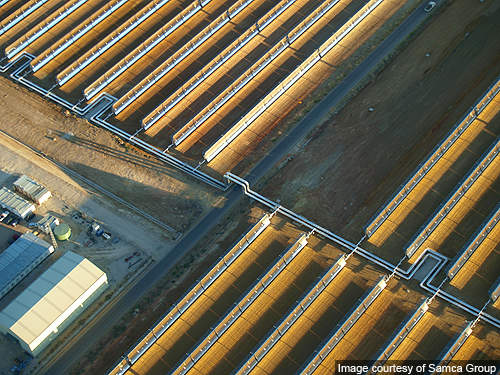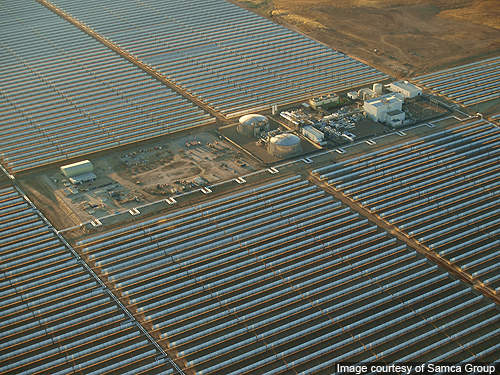The concentrated solar power (CSP) plant La Florida, located in Alvarado in the province of Badajoz, is one with the largest solar fields in Spain. It has been developed and is owned by Renovables SAMCA (SAMCA Group and Sociedad de Promoción y Participación Empresarial Caja Madrid S.A.).
One of the largest installations in the world, the plant has the capacity to generate 49.9MW power, using parabolic trough collectors, enough to power 45,000 homes. It has been built to meet Spain’s power consumption requirements through renewable sources.
The commissioning of the plant has resulted in the country’s solar power production equalling that of the power generated by a nuclear plant. The plant is estimated to reduce more than 160,000t of CO2 every year.
The construction of the plant began in July 2008 and was completed in June 2010.
The plant created 350 local jobs during construction. It is expected to sustain 50 jobs for maintenance and operation of the plant.
The Spanish company, Renovables SAMCA, is the prime company involved in the design and construction of the plant, which was built with no EPC contractor but under direct contract aggregation by Renovables SAMCA.
Plant details
The plant is constituted in four parts – solar field, power block, thermal storage system and auxiliary systems.
The solar field comprises collector structure, mirrors, absorber tubes and thermal fluid system.
The length and absorption area of solar collector structures are 150m and 822m² respectively. The power block features steam generator, steam turbine, condenser and cooling towers. The capacity of the turbine is 49.9MW. The auxiliary system consists of water treatment plants, a fire protection system, a liquid natural gas station, emergency generators and a transformer substation.
The plant is built on an approximated rectangular surface of 220ha, which is occupied by 672 parabolic trough collectors with 225,792 mirrors and 550,000m² of absorption area. It covers a surface equivalent to 220 soccer fields.
Technology
The La Florida plant is based on parabolic trough collector technology. The plant includes an array of parabolic mirrors fitted with tubes. The mirrors reflect solar energy to the absorber tubes, heating the Diphenyl or Diphenyl oxide liquid flowing inside them. The thermal energy in the heated Diphenyl is transferred to the steam generator which produces the steam required to drive the steam turbine and to generate electricity.
The mirrors are aligned to rotate along the direction of the sun throughout the day to absorb solar energy with maximum efficiency.
The thermal storage system in the plant stores energy using molten salt tanks. The energy stored in the system allows the plant to generate electricity even after sunset. The tanks have capacity for 29,000t of molten salts (60% sodium nitrate and 40% potassium nitrate) and the system is able to store thermal energy for 7.5 hours.
Contractors
The electricity-generating steam turbine has been manufactured by Siemens. The parabolic mirrors, which absorb solar energy, were manufactured by Rioglass Solar, while the solar collector assemblies (SCA) were produced by Ingemetal. Schott manufactured heat collector elements (HCE).
Spanish power market
With the La Florida plant, Spain becomes the biggest solar power generator in the world with a total output of 432MW. This means it exceeds the solar power generation of the US by 10MW.
The solar power capacity of Spain jumped by 380% in 2008 from 2007 as the national FIT system was updated.
The country currently generates 432MW of solar power from 11 plants. An additional 20 plants are in various stages of construction. These will add 600MW of solar power to the country’s capacity in 2011.
Spain is expected to operate 60 CSP plants using various technologies, and produce 2,500MW of solar power by 2013. The Spanish government has spent around €2.5bn for the construction of solar thermal power plants. These investments are expected to reach €15bn by 2013.







